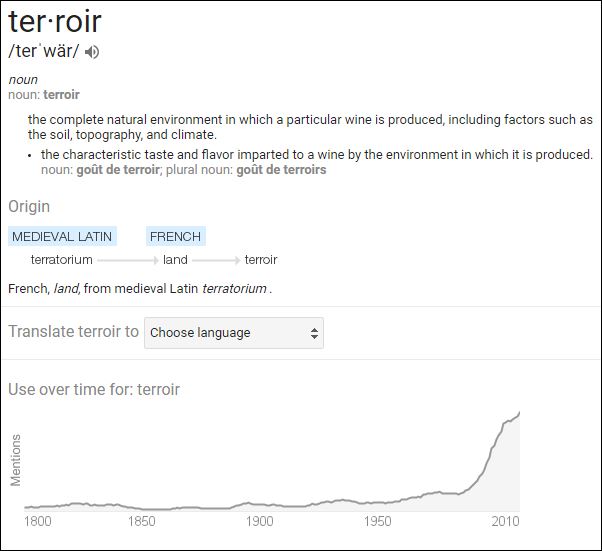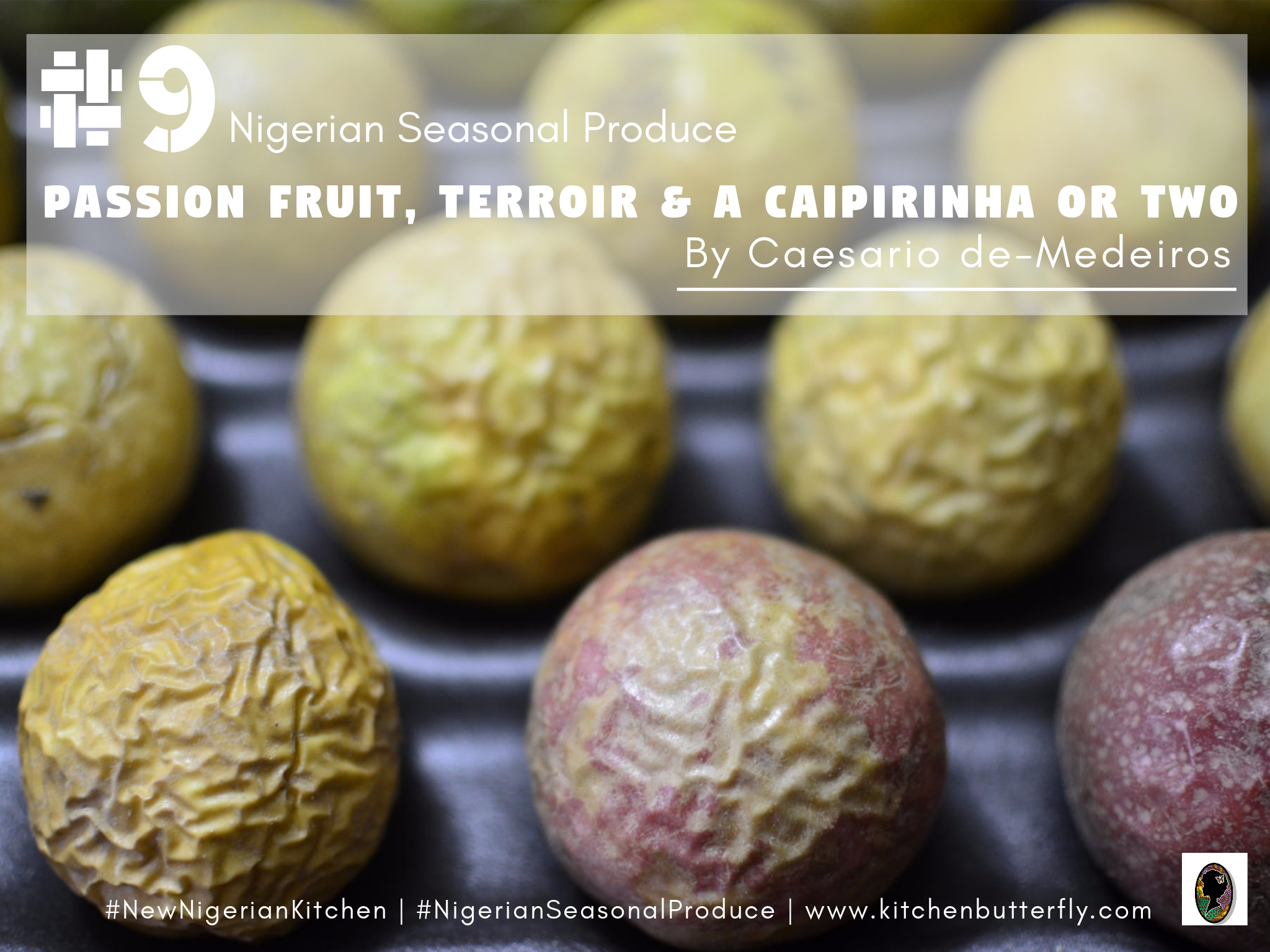‘Nigerian Seasonal Produce’ is a monthly column published on the last Saturday of each month (except when your host decides to mess up and you’re forced to find your own solutions and make it happen – bluehost, our relationship shall come to an end – soon! A huge thanks to Sanusi – super hero extraordinaire for helping me sort it out.
Anyway, in this column, a writer explores a specific seasonal fruit, vegetable or leafy green assigned by the editors of Kitchen Butterfly and based on the Nigerian Seasonal Produce Calendar. This month (August :)), we’re celebrating passion fruit.
Our author Caesario – maestro of the bar and everything drink. I am completely blown away by his knowledge and passion for mixology. Did I say he’s also created an amazing show – The Barman TV? I even appeared in episode 5 [22.43mins] 🙂
Thank you, Caesario.
I have been trying to write this for two weeks with no luck and several false starts. The first one started as an infusion with gin and coffee beans, it was originally destined to end up in a Negroni then I decided to throw some passion fruit into the infusion for a few hours, just to see what would happen. I remembered I had kumquats in the goodie bag Ozoz prepared to stimulate my writing, so I threw that in as well. My infusion has since been filtered but is yet to come to life in a drink. Blame it on Lagos living. I am just as curious as you to find out how this coffee, passionfruit, kumquat-infused gin plays out in a Negroni.
The Negroni cocktail is made of one part gin, one part vermouth rosso (red, semi-sweet), and one part Campari, garnished with orange peel. It is considered an apéritif; Source – Wikipedia
My second false start was to make a hibiscus-anise syrup to balance out the passion fruit in my mystery drink. I left the hibiscus and anise soaking for a day longer and of course fermentation kicked in and invited bacteria to the party. I am now extremely excited to make a syrup out my bacteria infested hibiscus- anise water. There is no reason to fear bacteria, I just don’t know how it will play out on a menu. Two weeks have gone by and I have a passionfruit gin infusion and bacteria rich hibiscus-anise flavoured water destined to become syrup but still nothing on passion fruit.
So I decided I needed a day away or I was never going to to write this article. A quick glance at my shelf and everything that called out my name ended up in my duffel bag. My objective was to share the simplest way that passion fruit can be used in a drink.
The contents of my bag:
- 2 lemons
- 2 dozen limes
- 1 bottle of Lemon Hart Demerara Rum
- Half a bottle of Mount Gay Rum
- A bottle of Cachaca (Brazil’s national spirit whose only point of difference from Rum is that it is distilled from fresh sugarcane juice while the former is distilled from molasses. Sugarcane is another agricultural produce that Nigeria has in abundance but just sells in the street out of wheel barrows)
- A bottle of Fee brothers Molasses bitters (more cocktail flavouring than actual bitters)
- A bottle of D’USSE Cognac
- A box of St Louis cubed sugar
- and of course the belle of the ball and star of our conversation – the last 2 surviving extra shrivelled passion fruit. A small sample considering that this was the main subject of my experiment.
I had eaten the remaining passion fruit slowly over the weeks I spent procrastinating, each time hoping that it would let off a light bulb in my brain. The only thing it inspired was funny faces from the shock of how sour the Nigerian-grown passion fruit is.
This is an opportunity to make a quick point about recipes – they rarely accommodate for terroir – a term more commonly used with wine and grapes – but it’s simple enough to agree that passion fruit grown in Nigeria versus passion fruit sourced from Southern Brazil (where it is native) will produce very different results in the same dish or drink.
So in interpreting cocktail recipes, you must place more trust in your tongue than the authors prescription. Please apply this to the recipes I provide below.

Now at my secret escape location ready to start writing, I thought I deserved a drink for pulling through so far with my commitment. With no particular plan in mind I started making a Caipirinha.
Caipirinha [kajpiˈɾĩj̃ɐ] is Brazil’s national cocktail, made with cachaça [kaˈʃasɐ] (sugarcane hard liquor), sugar and lime. Cachaça, also known as pinga, caninha, or any one of a multitude of traditional names, is Brazil’s most common distilled alcoholic beverage.
Although both rum and cachaça are made from sugarcane-derived products, in cachaça the alcohol results from the fermentation of fresh sugarcane juice that is then distilled, while rum is usually made from refinery by-products such as molasses; Source – Wikipedia
So here is my passion fruit Caipirinha. The next post will feature a few twists:
First the limes went in – quartered, followed by 3 cubes of sugar and an entire medium sized passion fruit into a whisky glass,
I gave it a gentle muddle, added crushed ice, then poured 25ml of Cachaca, 12.5ml of Lemon Hart Demerara rum and 12.5ml of Mount Gay Rum + two dashes of fee brothers molasses bitters, some more crushed ice and gave it as good a churn as I could with my knife (as I didn’t pack a bar spoon).
And that’s when I realised what this article was going to be about – this fancy twist on a classic Caipirinha which suddenly made everything clear. Please don’t try this without supervision boys and girls – Lemon Hart Demerara rum is 75.5% alcohol, though I doubt you would find it easily. Did someone say challenge accepted? 🙂
Why? because there is no point in sharing ideas that are difficult to replicate especially since the audience for this is not bartenders. Making a Caipirinha requires no advanced bartending skill, plus there are many kitchen utensils that can substitute for all the bartending tools that you would ordinarily need.
Lastly, it is soooo delicious, best thing to drink on a hot day – ssuch an accommodating drink. You can regulate it along the lines of sweet or sour depending on your preference and mild or boozy depending on your temperance.
I mean the Caipirinha is the official cocktail of the Brazilian carnival, are you going to argue with that?
“For centuries the caipirinha was a poor man’s drink,” Eliana explains, “only for sweaty rural laborers and poor Carnival revelers.” Upper-crust Brazilians turned up their noses, regarding it much the way Americans view moonshine. “But lately it’s become quite trendy. Handcrafted, artisanal versions of cachaça are taking over.”; Source – Islands
Before we start drinking, I would like to state that until this dropped on my lap, I had no idea that we grew passion fruit in Nigeria.
It is sad how unaware we are about the fresh ingredients that we have at our disposal and how unfair it is to our economy that we choose to plan menus (drinks and food) based on imported fruits and vegetables. When we have a full basket of delicious seasonal options most of which are indigenous and offer the opportunity for authenticity. Isn’t this the ideal of every artist?
Chefs , bartenders, restaurants owners are you not aware that you are artists too?
To make matters worse I had a look the seasonal produce calendar compiled by Ozoz and I am ashamed to say that I discovered a couple other surprises, some off which I cannot claim to have tasted like:
- Custard apple
- Dates (I have tasted but I am sure they were imported)
- Rose apple
- Sea almond
Well done Ozoz for putting this great resource together, I intend to put it to good use.
So what is the problem, why do we spend millions of dollars importing these ‘exotic fruits’ and the equivalent in concentrates – when we have a wealth of delicious options?
My biggest annoyance is our obsession with strawberries, and I remember once I was sitting in a popular Victoria Island cafe and someone ordered a strawberry smoothie and got a good measure of strawberry concentrate in a blender full of ice. Completely unaware of the injustice she had just been served, the guest enjoyed her fresh strawberry smoothie (if only she knew) but right across the street there was a fruit seller with a cart full of fresh pineapples, mangoes and oranges and I could not understand why this establishment would choose to use fruit concentrate in their N3,000 Naira smoothie instead. The price of 6 whole pineapples, but I digress.
Passion fruit is in season for 9 months out of the year with the exception of April, July and December and you do not have to be a bartender to make a delicious drink out of this homegrown beauty.
Next post? Recipes and twists on the caipirinha.
Caesario de-Medeiros is a certified wine and spirits educator but to stay alive he runs a marketing agency that drives advocacy programs and implements promotional marketing activities for the spirits industry in Nigeria, Ghana and The Ivory Coast.
He recently created a bartending reality television show called The Barman TV to put the spot light on bartenders in West Africa and to raise respect for the craft among bartenders and consumers. His favourite drink to have is a Negroni. Nothing is bitter or spicy enough for him and he has zero tolerance for bars in Nigeria that offer drinks that contain strawberries, blueberries or blackberries. Bury the berries and embrace Agbalumo 🙂





